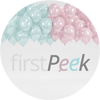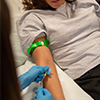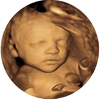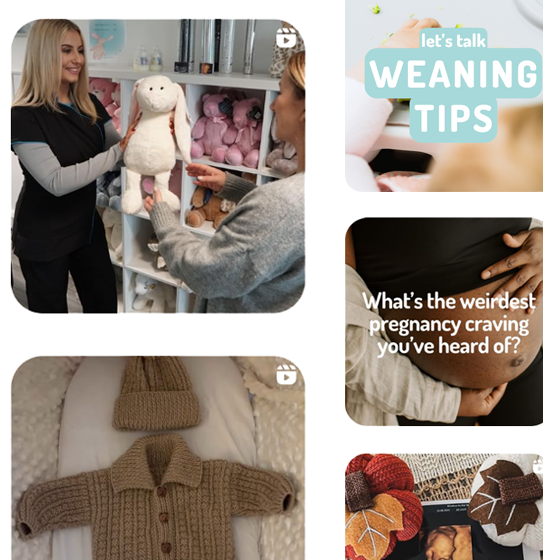Weaning is a major milestone in your baby’s first year – and understandably, it can come with a mix of excitement, uncertainty, and a whole lot of questions. One of the most common ones is: how can I tell if my baby is ready to start solid foods?
This guide aims to walk you through what weaning is, when it’s typically recommended to begin, and most importantly, the key signs that your baby may be ready to take that next step.
🌱 What Is Weaning?
Weaning is the gradual process of introducing your baby to foods and drinks other than breast milk or infant formula. In the UK, the NHS and other healthcare bodies advise beginning weaning at around 6 months of age. This is because by this stage, most babies are developmentally ready to handle food safely and effectively.
It’s important to remember that weaning is not about replacing milk overnight. At first, food is simply an addition to milk feeds – a time for babies to explore new tastes, textures, and skills. Milk will remain their primary source of nutrition until they are around 12 months old.
📅 When Should You Start Weaning?
The recommended age for introducing solid foods is around 6 months. This guideline is based on current research which shows that most babies:
- Have matured enough to move food safely around their mouth and swallow it
- Are developmentally ready to sit up and coordinate chewing, swallowing, and breathing
- Are better able to digest nutrients found in solid food
Before 6 months, a baby’s digestive system is still developing, and offering solids too early may increase the risk of infections or allergies. That said, a few babies might be ready a little earlier, but weaning before 4 months (17 weeks) is not recommended under any circumstances unless medically advised.
✅ Signs That Your Baby Is Ready to Start Weaning
Rather than just looking at your baby’s age, it’s also important to observe their developmental signs. Most healthcare professionals agree that babies are ready to start weaning when they show all of the following three signs:
1. They Can Stay in a Sitting Position, Holding Their Head Steady
Sitting upright with good head control is crucial. It helps babies swallow food safely and reduces the risk of choking. Your baby doesn’t need to sit unsupported completely — sitting with help, like in a highchair with good support, is fine.
2. They Have Developed Hand–Eye Coordination
Your baby should be able to look at food, pick it up, and bring it to their mouth. This coordination is a good sign that they’re ready to explore self-feeding — whether you’re starting with purées, finger foods, or a combination of both.
3. They Can Swallow Food, Not Just Spit It Out
Young babies have a reflex called the tongue-thrust reflex, which causes them to push food back out of their mouth. This usually fades by around 6 months. Once this reflex is gone, they can begin to move food around their mouth and swallow it more easily.
🚫 Signs That May Seem Like Readiness – But Aren’t
Some behaviours can be mistaken for signs that your baby needs solid food, but they are typically part of normal development or growth:
- Chewing their fists – This is very common and part of oral development. It doesn’t always mean hunger.
- Waking more during the night – Sleep patterns often change around 4–6 months. This doesn’t necessarily mean your baby is hungry for solids.
- Wanting more milk – This could indicate a growth spurt. Feeding more frequently is normal and not a reason to start solids early.
- Watching you eat – Curiosity is part of their development and doesn’t always mean readiness for solids.
If you’re unsure, it’s always best to check with your health visitor or GP before starting solids.
🍌 What Foods to Start With
When your baby is ready to start weaning, begin with simple single foods that are easy to digest. These can include:
- Pureed or well-mashed vegetables like carrot, parsnip, broccoli, sweet potato
- Soft fruits like banana, avocado, or well-cooked apple and pear
- Baby rice mixed with your baby’s usual milk
Once your baby gets used to these, you can gradually move on to:
- Thicker textures and mashed food
- A wider variety of fruit and veg
- Protein-rich foods like lentils, beans, meat, fish, eggs (well-cooked)
- Dairy like full-fat yoghurt or cheese (from 6 months onwards)
Avoid adding salt or sugar to your baby’s food, and introduce potential allergens (such as nuts, eggs, and gluten) one at a time and in small amounts, watching for any reaction.
🍼 What About Milk Feeds?
Milk (breast milk or infant formula) remains your baby’s main source of nutrition during the early stages of weaning. As your baby gradually eats more solid food, their need for milk will naturally decrease, but most babies still have regular milk feeds up until their first birthday.
🧘♀️ Go at Your Baby’s Pace
Weaning isn’t a race. Some babies take to it with enthusiasm; others need more time and encouragement. Allow your baby to explore, make messes, and learn. Offer food at a time when they are not too tired or hungry, and try to keep the experience fun and pressure-free.
📞 When to Ask for Advice
If your baby was born prematurely, has known allergies, medical conditions, or you’re simply unsure about when or how to start weaning, speak to your health visitor, GP, or a paediatric dietitian. They can provide personalised support based on your baby’s needs.













 Packages & Prices
Packages & Prices  Important Info & Policies
Important Info & Policies  Your Scan
Your Scan